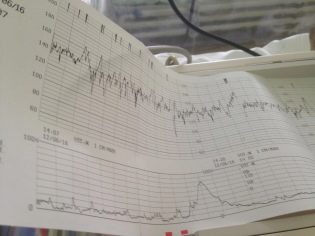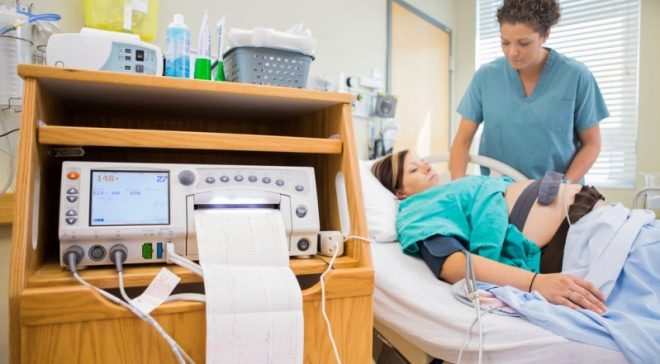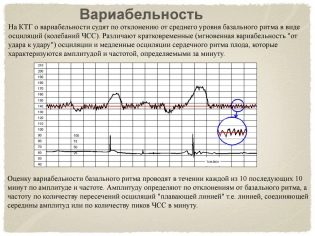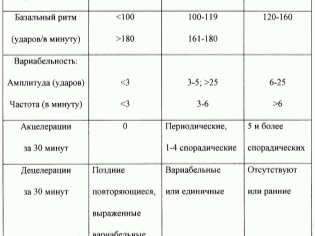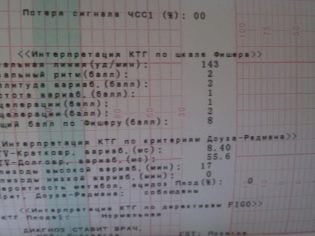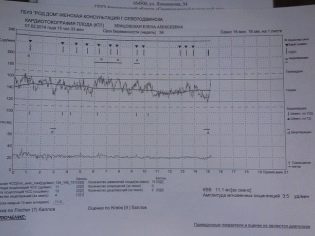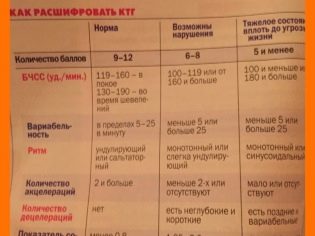What do 9 points mean for CTG?
Assessment of the condition of the baby during his stay in my mother's tummy is very important. Such a study makes it possible to identify many pathologies of the course of pregnancy that are difficult for a doctor to assess only during a clinical examination. One of these methods is cardiotocography.
How is the assessment done?
To draw the conclusion of the study, doctors use various clinical indicators. This method of examination allows to evaluate the contractile activity of the uterus walls of the expectant mother.
Also, using this type of examination, you can determine several basic vital signs of the baby, which is in my mother's tummy. One of the most important measurable criteria is The number of heartbeats baby.
The heart rate of a child who is evaluated during this study is called basal. Doctors determined the normal values of this indicator. Exceeding it above 160 per minute is called tachycardia. This condition, as a rule, indicates unsuccessful fetus.
Basal indicators allow doctors to estimate the number of beats of a baby's heart outside of uterine contractions. As the uterus begins to contract, periodic changes are recorded.
Doctors call the difference between them amplitude. The return of the heart rate to the basal (initial) level after uterine contractions is called the recovery period (time).
Acceleration and deceleration are also important clinical indicators. In the first case, this is an increase in the frequency of baby heart beats by more than 15 from the original base rhythm. This indicator is very important, as it allows to assess the child's ability to respond to various stimuli.
Reducing the frequency of more than 15 beats from the original basal level is called deceleration. Normally, for a set period of time, they should not be there anyway.
You can carry out this type of research at different times of carrying a baby. However, experts still advised to perform this method at week 32. Earlier studies are often not a manifestation of any serious pathology.
In such situation consultation of an experienced obstetrician-gynecologist is required. In this case, the doctor will be able to compare the results obtained after the cardiotocography and the data of the clinical examination of a particular woman. This will help the specialist to assess how the pregnancy proceeds.
Conducting this study in late pregnancy also allows you to determine contractions. For this, reductions of the uterine walls are evaluated. If the index is 99% or more, then the contractile activity of the uterus is very active. In this case, the doctor will certainly evaluate the condition of the cervix to understand the readiness of the female body for childbirth.
How to decipher?
To carry out the interpretation of the obtained clinical indicators should a specialist. It is quite difficult for the expectant mother to do this on his own. You can try, but still you should definitely consult with the doctor.
Taking into account the obtained indicators, doctors distinguish several clinical variants of the research results:
- normal;
- doubtful;
- pathological.
Criteria for normal CTG
Experts identify several basic parameters that are a manifestation of the norm. Thus, the basal level of the frequency of contractions of the baby's heart should be in the range of 120-160 beats per minute.
The amplitude of variability rhythm should be 10-25 in 60 seconds. Degeneration should not be recorded.. The number of accelerations should not be less than two in ten minutes of observation.
Criteria for questionable CTG
In this case, the basal rhythm indicators are in the range of 100-120, or 160-180 heartbeats per minute. Heart rate variability is less than 10 or more than 25 in 60 seconds.
Acceleration is not recorded during the observation, but short and shallow decelerations are detected. The general condition of the future mother with virtually no change. No adverse symptoms, as a rule, she notes.
Criteria for pathological CTG
In this case, the basal rate is less than 100 or more than 180 heartbeats per minute. Variability is almost unchanged. This option is called monotonous. The heart rate variability in this case is less than 5.
Deceleration is recorded during the study. They, as a rule, have a different form and are quite pronounced. A special type of deceleration can also be recorded, occurring after ½ minute. They are called late.
What do the results mean?
Various scorecards are used to evaluate indicators. The choice of the scale remains for the specialist who observes the pregnant woman. In some countries, doctors may use different scoring systems.
According to Fisher
It is one of the most popular and frequently used by doctors. In such a system, all the studied indicators are assigned points - from zero to two.
9 points in this measurement system is a very good indicator. In such a situation, fear for the condition of the baby should not be. The obtained values of 9/10 are a sign that The studied parameters in mom and baby are within normal values.
In this case, the doctor will advise the expectant mother to carefully monitor their state of health. She needs to control her daily routine, regularly take walks in the fresh air, as well as get enough sleep. Rational nutrition and taking multivitamin complexes will also help consolidate the results achieved.
In order for the rates to remain high, the doctor will definitely advise the expectant mother to limit the exercises to intense physical exertion and any psycho-emotional stress.
The importance of these recommendations increases several times if the expectant mother bears several babies at the same time.
According to Krebs
Used by experts more rarely. Its significant difference is the presence of another estimated indicator. It is the determination of the number of active movements of the baby for ½ minute.
The additional criterion under study contributes to the fact that the assessment of indicators is carried out on a 12-point system. The result 9/11 points is an indicator of the norm.. In this case, pronounced pathologies are not observed. The condition of the future mother in such a situation, as a rule, is good. She does not notice any adverse symptoms.
For details on what 9 points mean for CTG, see the following video.



